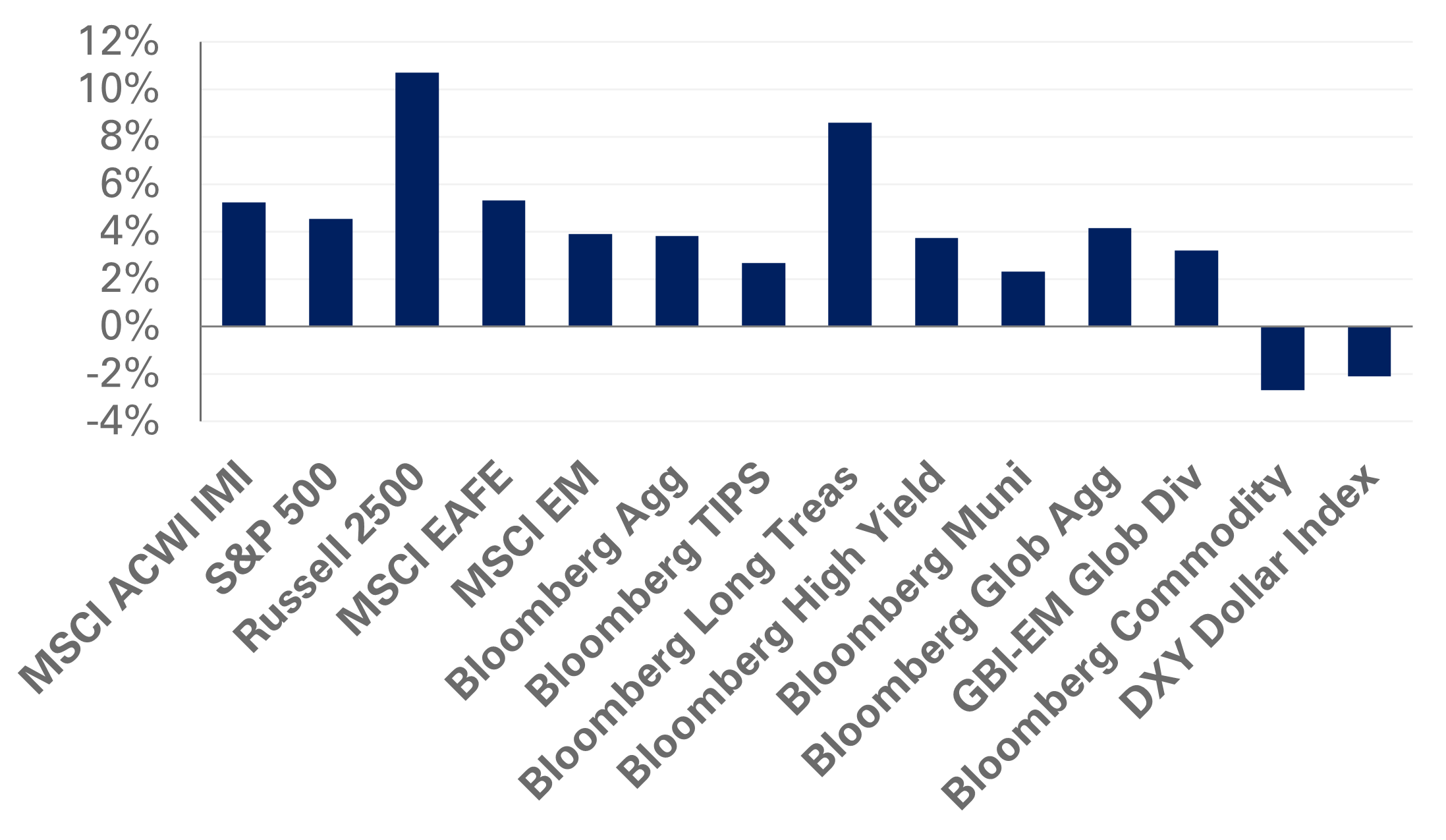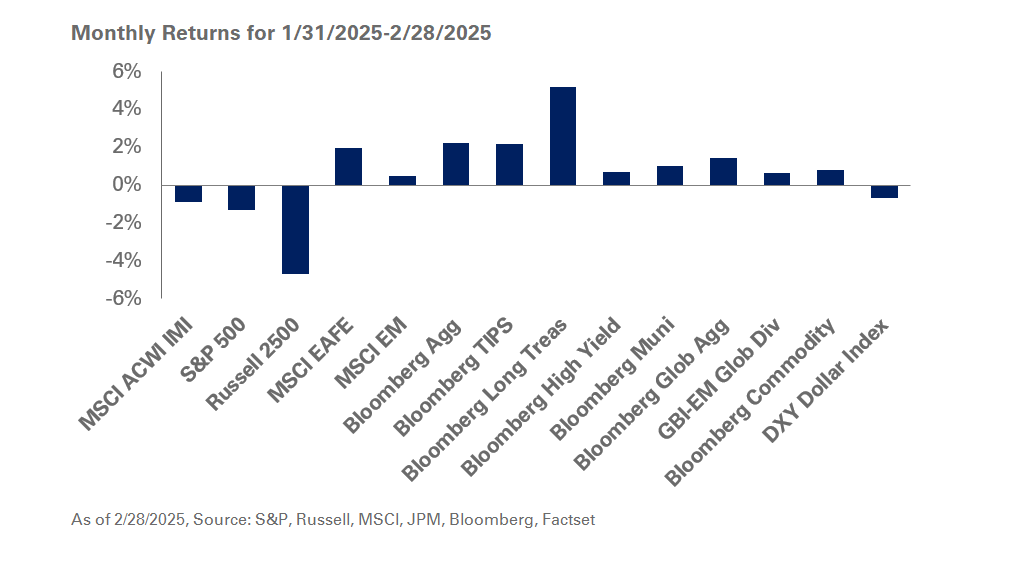On the heels of a Fed pivot, bonds and equities rallied in December to finish the year strong. Fed Chairman Jerome Powell appeared dovish during the Federal Reserve meeting last month, which was all markets needed to fuel a Santa Claus rally late in the year.
The interest-rate moves in December were unprecedented with yields lower across the curve in the U.S. During this period, Treasury yields dropped sharply with both the 10- and 30-year yields falling 48 basis points; credit spreads tightened with risk premiums on investment-grade debt narrowing by five basis points and high-yield spreads lower by 47 basis points – both now comfortably within their median-spread levels.
As has been the story for most of the year, stocks reacted to the sharp interest rate moves last month almost as if they have been a duration asset this entire year. As a result of the nearly 50-basis points drop in interest rates in December, U.S. equities rose 4.5% as measured by the S&P 500 Index. Global equities outperformed U.S. equities with the MSCI ACWI up 5.2%; emerging market stocks underperformed the U.S. and EAFE, up just 3.9%. Being more rate sensitive than other equities, U.S. small-cap stocks turned in a stellar performance in December, rising 10.7% as measured by the Russell 2500 Index.
The Fed dot plot, a survey of Fed board members’ future expectations of the Fed Funds Rate, shows a median expectation of three cuts in 2024; on the other hand, markets are pricing in six cuts during the same period, according to the Fed Fund Futures. Irrespective of the outcome—whether the Fed or the markets are right, or both are wrong and interest rates remain higher for longer—the divergence between the expectations of the Fed and the markets is paving the way for a repricing across asset classes. Markets also appear to have priced in a soft landing, so any signs of weakness are likely to cause volatility.
Elsewhere, energy markets ended the month lower with WTI Crude Oil spot prices down 5% in December, continuing their fall from their peak in September. Overall, the Bloomberg Commodity Index decreased 2.7% for the month.
Keeping in mind the dynamics of U.S. equities, we suggest investors reduce their exposure to the S&P 500, while maintaining U.S. large-cap value positions. We also recommend investors increase exposure to U.S. high-yield bonds and broadly evaluate the risk-return benefit of fixed income. Real interest rates have risen to attractive levels and, given the continued uncertainty surrounding inflation, we recommend taking advantage of the available real yield and adding exposure to TIPS. Lastly, we suggest holding greater levels of cash within safe-haven fixed-income exposures and encourage investors to maintain greater levels of portfolio liquidity.




